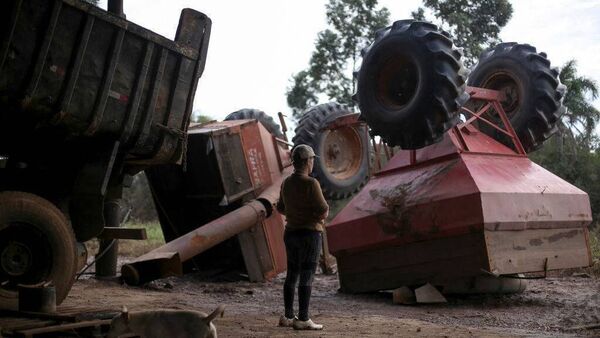The region is responsible for over 70% of Brazil’s rice production, with rice losses expected to reach up to 14% of Brazil’s total production. A man looks at damaged machinery on a farm in Eldorado do Sul, Rio Grande do Sul State, Brazil, on May 22, 2024. More than 600,000 people have been displaced by the heavy rain, flooding and mudslides that have ravaged the south of the state of Rio Grande do Sul for around two weeks.
(Photo by Anselmo Cunha / AFP) (Photo by ANSELMO CUNHA/AFP via Getty Images) The vulnerability of major food producing regions has been laid bare by the record high rainfall of up to 30 inches in Rio Grande do Sul, one of the main agricultural producing states in Brazil. Last week, the death toll reached 157, with 88 people still missing, thousands injured or sickened, and some 650,000 displaced. Excessive rainfall from April 29 to mid-May, affected 2,336,136 people.

Climate specialists said the El Niño weather pattern, high humidity from the Amazon rainforest, and a heatwave brought the rain. It’s the state’s worst-ever climate catastrophe, and its agriculture and livestock sectors have been severely impacted. Agriculture and livestock account for nearly 17% of the state’s economy.
It produces significant shares of Brazil’s soybean, rice, wheat, corn, dairy, animal protein and animal feed, fruits, and vegetables. Fortunately, the harvesting of Rio Grande do Sul’s estimated 6.7 million hectares of soybeans was three-quarters completed.
But t.























